27+ Sample Move-in / Move-out Inspection Checklists
-
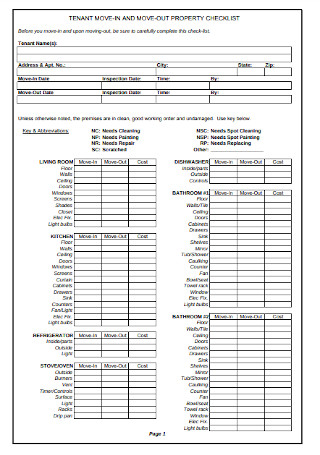
Move in Property Inspection Checklist
-
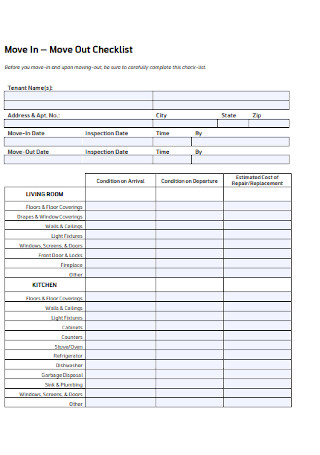
Move in Inspection Checklist
-

Apartment Move in Inspection Checklist
-
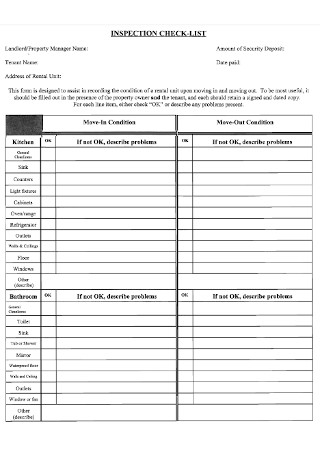
Property Move in Inspection Checklist
-
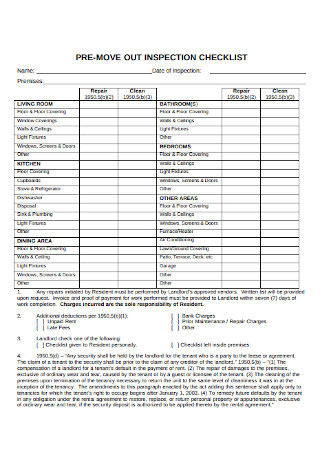
Pre- Move out Inspection Checklist
-
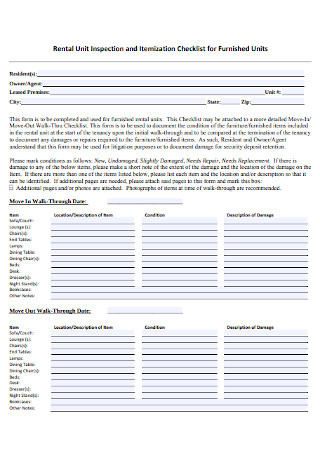
Rental Move in Inspection Checklist
-
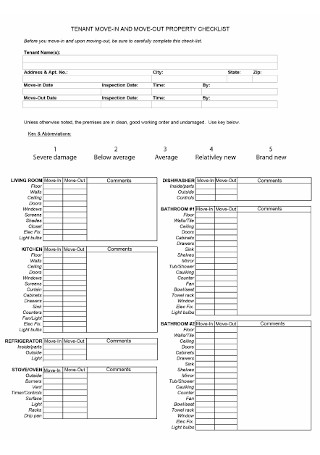
Tenant Move in Inspection Checklist
-

Rental Move out Inspection Checklist Sample
-
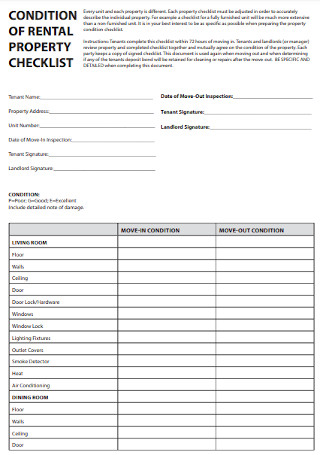
Rental Property Move in Inspection Checklist
-
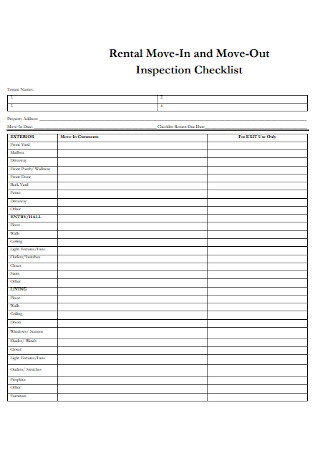
Rental Move in and Move out Inspection Checklist
-
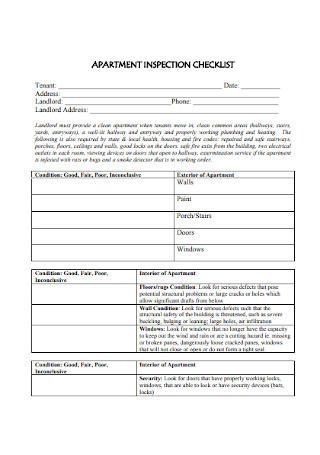
Apartment Move in Inspection Checklist Sample
-
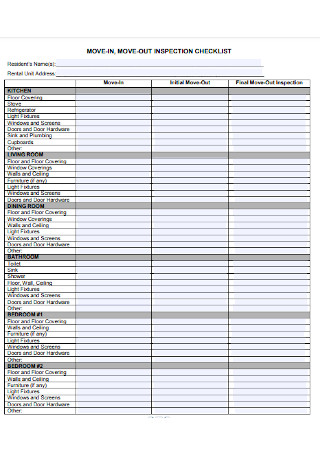
Residential Move in and Move out Inspection Checklist
-
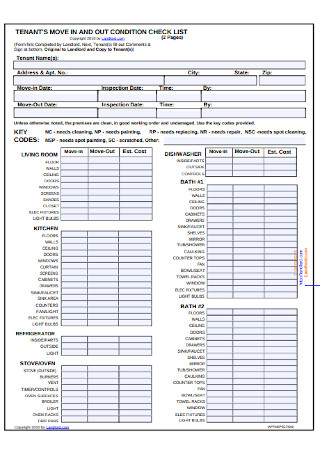
Tenant Move in Move out Inspection Checklist
-
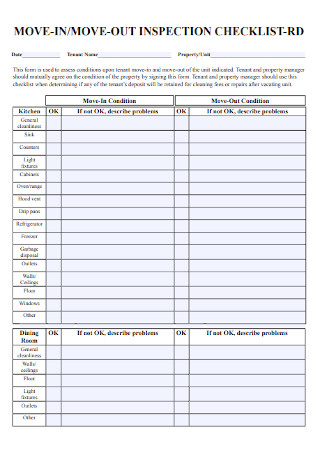
Move in and Move out Inspection Checklist
-
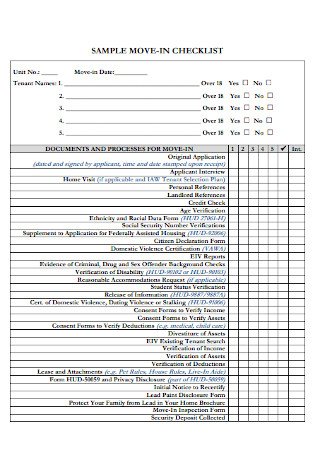
Sample Move in Inspection Checklist
-

Tenant Move in and Move out Inspection Checklist
-
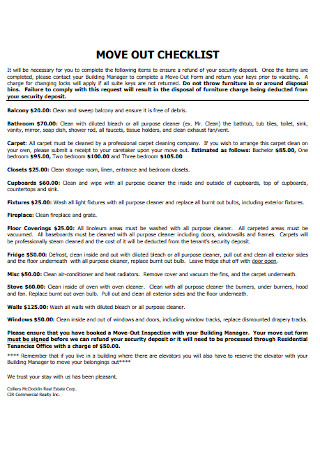
Move out Inspection Checklist
-

Sample Move in and Move out Checklist
-

Rental Property Move in and Move out Inspection Checklist
-
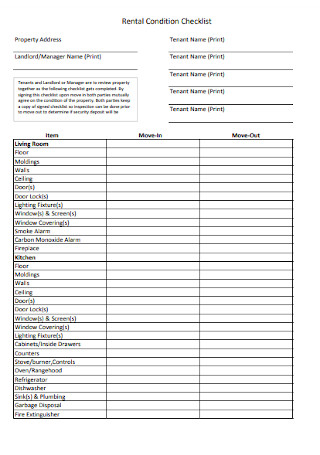
Rental Move in and Move out Inspection Checklist Sample
-

Initial Move in Inspection Checklist
-
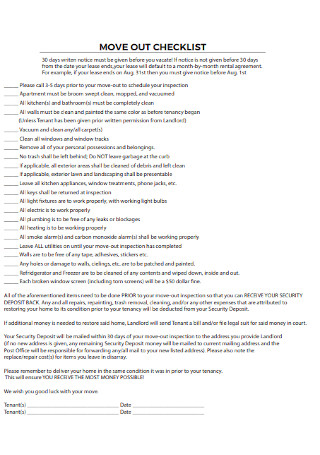
Move out Inspection Checklist Sample
-
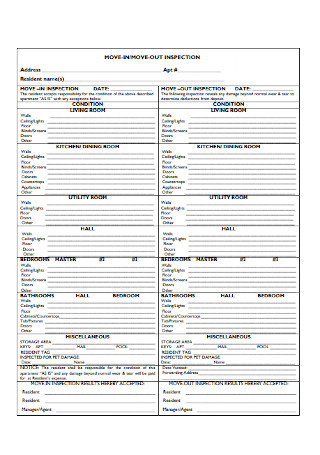
-
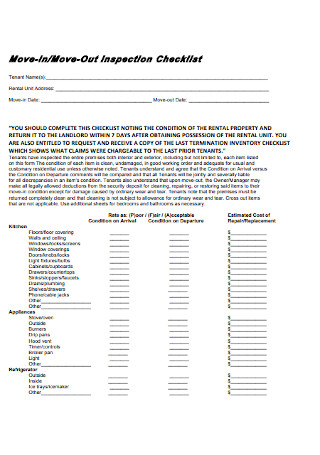
Tenant Move in Move out Inspection Checklist Sample
-
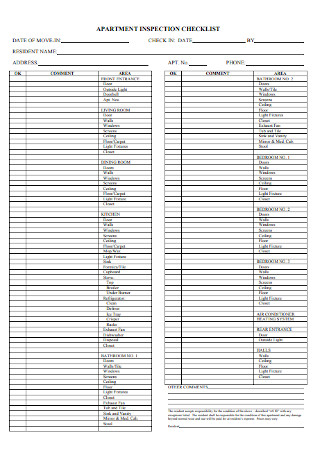
Sample Apartment Move in Inspection Checklist
-
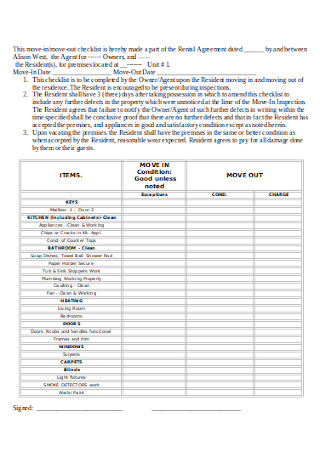
Move in and Move out Inspection Checklist Sample
-
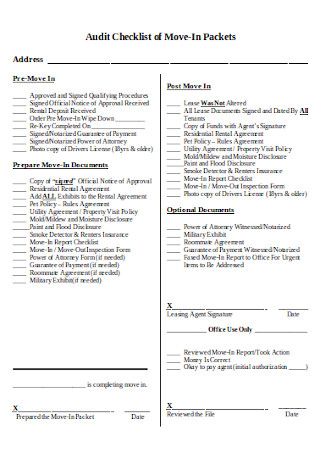
Move in Inspection Checklist Sample
-
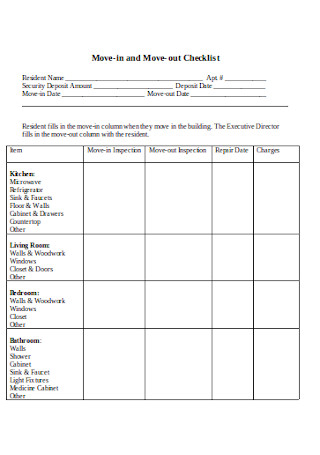
Property Move in and Move out Inspection Checklist
-

Move in Peroperty Inspection Checklist Template
download now
FREE Move-in / Move-out Inspection Checklist s to Download
27+ Sample Move-in / Move-out Inspection Checklists
What Is a Move-in / Move-out Inspection Checklist?
Elements of an Effective Move-in / Move-out Inspection Checklist
Purpose of Making a Move-in Inspection Checklist
Reasons for Developing a Move-out Inspection Checklist
10 Steps for Creating an Efficient Move-in / Move-out Inspection Checklist
Benefits of Having an Outstanding Move-in / Move-out Inspection Checklist
Do’s and Don’ts for Making the Best Move-in / Move-out Inspection Checklist
Move-in / Move-out Inspection Checklists FAQs
Hence you have to be particular with the condition of the property that you will rent. Landlords usually create a move-in/move-out inspection checklist. This document is one of the items that you must look for whenever you plan to enter a lease term.
What Is a Move-in / Move-out Inspection Checklist?
There is “43% share of non-homeowners who can’t afford to buy a home” (source: Statista). If you are a renter or a tenant, one of the things that you have to closely look into and observe is the condition of the property that you will be renting. You do not have to worry as a lot of property owners and/or landlords already have move-in/move-out inspection checklists that you can optimize. The specified document is beneficial not only on your part as a tenant as it can also be used by the landlords to ensure that the property is well-maintained and that all available systems and equipment are in-check.
A move-in/move-out inspection checklist is an essential tool that can help you to assess, record, and document the conditions of the rented property before you move-in as well as before you leave. There are many reasons why it is important for a move-in/move-out inspection checklist to be created and one of which is to make sure that accountability for losses and damages are clarified. Hence, this type of inspection checklist can protect the rights of both the tenant and the landlord.
If you are a property owner, you have to prioritize the creation of a move-in/move-out inspection checklist before you accept tenants or renters. Try to use any of our move-in/move-out inspection checklist samples and templates so you can efficiently create a document that can be very useful to both parties who are involved in a rental or lease agreement. The references that we have listed below can be very helpful in your efforts of ensuring and promoting a healthy and transparent landlord-to-tenant relationship.
Elements of an Effective Move-in / Move-out Inspection Checklist
There are several rental house inspection checklist elements that you have to prioritize so you can ensure the quality of the final document that you will come up with. Making sure that you are aware of the items or factors that can impact the high usability and effectiveness of your inspection checklist can give you the confidence to use the specified document any time of the day. Are you in the midst of drafting the move-in/move-out inspection checklist that you plan to use for the property that you are managing? The elements that you must focus on if you want to have an effective move-in/move-out inspection checklist include the following:
Purpose of Making a Move-in Inspection Checklist
If we are to speak about a move-in checklist for inspection alone, this document is very important for renters as this can help them assess the existing conditions of the property that they will rent. Through this, their accountability can be kept to a minimum since property conditions are well-documented. A move-in inspection checklist is necessary as it can set the expectations of the tenant with regards to the conditions or quality of the rented space as well as the ways on how he or she can maintain this condition. Some of the purposes of making a move-in inspection checklist are as follows:
Reasons for Developing a Move-out Inspection Checklist
You can develop a separate move-out inspection checklist to make the inspection documentation processes more specific and concise during a tenant’s move-out. On the other hand, you can just include another segment in your move-in inspection checklist so you can easily align and compare the results of the move-in and move-out inspection. The decision on whether to use a separate move-out inspection checklist or not will depend on the insights of the property owner and the inspection protocols or regulations followed by the landlord. The reasons for developing a move-out inspection checklist include the following:
10 Steps for Creating an Efficient Move-in / Move-out Inspection Checklist
A move-in/move-out inspection checklist mostly works just as how a home inspection checklist does. The main difference between the two is that a move-in/move-out inspection checklist is used for properties that are rented or leased while a home inspection checklist is obviously used for owned residential properties. If you are planning to develop a move-in/move-out inspection checklist, the checklist document development process that you will follow should be highly considered. You have to know all the stages of the inspection checklist’s creation so you can optimize your efforts as you get involved in the process. Here is a step-by-step guide that can make it easier for you to create an efficient move-in/move-out inspection checklist:
Benefits of Having an Outstanding Move-in / Move-out Inspection Checklist
In comparison to a workplace inspection checklist, a move-in/move-out inspection checklist should also be detail-oriented, organized, and clear. If you can develop an excellent move-in/move-out inspection checklist, it will be easier for you to assess or evaluate the conditions of the property that you will rent. There are many ways on how a move-in/move-out inspection checklist can be advantageous on both the sides of the tenant and the landlord. Do you want to know how you can benefit from using the specified document? Below are the benefits of having an outstanding move-in/move-out inspection checklist.
Do’s and Don’ts for Making the Best Move-in / Move-out Inspection Checklist
Just like a site inspection checklist, your move-in/move-out inspection checklist must have a concise presentation of the conditions of all the available items in the location. Are you interested to have more ideas on how you can come up with an effective and efficient move-in/move-out inspection checklist? You came in the right place as we have prepared a number of guidelines and tips that you can surely benefit from. A few do’s and don’ts that you must always remember when making your move-in/move-out inspection checklist are as follows:
Move-in / Move-out Inspection Checklists FAQs
Are there any information with regards the creation of a move-in/move-out inspection checklist that is unclear to you? Leave no vague concepts or ambiguous information behind and make sure to raise and put your questions forward. Seeking answers is a great way for you to assure that all the information that you are knowledgeable or aware of is true and reliable. Here are some questions that are frequently asked about move-in/move-out inspection checklists:
Can you create separate move-in and move-out inspection checklists?
It is actually possible for you to separate a move-in and move-out inspection checklist. This will depend on the data management systems and documentation style of the property that you are managing. However, it will be more efficient and easier if you will create a single move-in/move-out inspection checklist document as you only need to deal with one inspection checklist for two separate activities.
What makes a move-in / move-out inspection checklist effective?
For a move-in/move-out inspection checklist to be effective, you need to make sure that the final document that you will make contains characteristics that reflect quality. You must have an inspection checklist that is comprehensive and has a complete list of all the items in and features of the property. You should also make sure that the document is well-formatted so you and your tenants can easily understand and relate to its content. The effectiveness of your move-in/move-out inspection checklist can be greatly measured through its ease of actual usage and the efficiency that it can provide to the entirety of the move-in and move-out inspection period.
Have you already finalized your decision to create a move-in/move-out inspection checklist? All the tips, recommendations, discussions, and references above can be very useful and beneficial on your part. Download any of the existing samples and editable templates that we have listed so you can begin the creation of your inspection checklist for both property rent move-in and move-out activities. We hope that all the items in this post have become of help in relation to your desire of having the best move-in/move-out inspection checklist for your property rental business.
